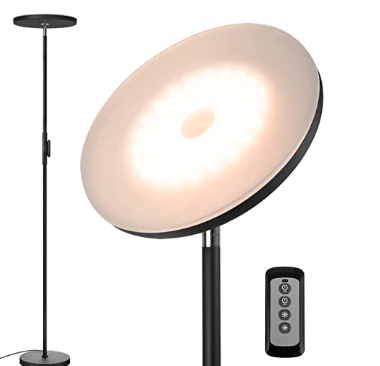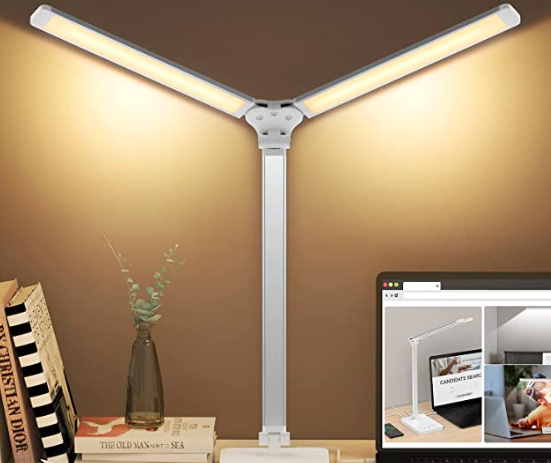Working from a home office has become increasingly common in recent years, especially with the growth of remote work and the COVID-19 pandemic.
To be completely honest, working from a home office can be a great way to increase flexibility and work-life balance, but it also requires discipline and self-motivation. By creating a comfortable and productive workspace and establishing clear boundaries, you can make the most of your remote work experience.
People get many benefits from working from home, and some of them are:
- Create a dedicated workspace: Set up a specific area in your home for work, ideally in a separate room with a door. Make sure your workspace is comfortable and well-lit, and that you have all the necessary equipment and supplies.
- Establish boundaries: Set clear boundaries between work and home life. Establish a routine and stick to it, including regular work hours, breaks, and time off. Avoid doing non-work activities during work hours, and vice versa.
- Minimize distractions: Eliminate distractions as much as possible, such as noise, clutter, and interruptions. Use noise-canceling headphones, close your door, and communicate your work schedule to your family and friends.
- Communicate effectively: Stay in regular communication with your colleagues and manager, using tools like email, instant messaging, and video conferencing. Make sure you’re clear on expectations and deadlines, and keep your manager updated on your progress.
- Take care of yourself: Working from home can be isolating, so make sure to take care of your physical and mental health. Take regular breaks to stretch or exercise, and make time for social activities outside of work.
The question is, what is the best lighting for a home office with no windows?


Many people don’t have windows at home office, or they use shades. That is why it is important to get only the best lighting fixtures. That way you can increase your productivity and make the work environment more friendly.
What to consider if working from a home office with no windows?
Working from a home office with no windows can be challenging, as natural light and fresh air can play an important role in boosting mood, productivity, and overall well-being. However, there are some steps you can take to make the most of your workspace:
- Use artificial lighting: Invest in high-quality artificial lighting that mimics natural light as much as possible. Choose bulbs with a color temperature of 5000-6500K, which is similar to daylight, and position your lights to reduce glare and shadows.
- Incorporate plants: Adding plants to your workspace can help improve air quality and create a more calming environment. Choose plants that do well in low-light conditions, such as snake plants, ZZ plants, or pothos.
- Take breaks outside: Even if you don’t have windows in your workspace, try to take regular breaks outside to get fresh air and natural light. Take a walk around your neighborhood or sit outside for a few minutes during your breaks.
- Stay connected with others: Working in a windowless environment can be isolating, so make sure to stay connected with colleagues and friends outside of work. Schedule virtual meetings or phone calls, or meet up with friends for lunch or coffee.
- Consider moving to a different space: If possible, consider moving your workspace to a different area of your home with windows or natural light. Alternatively, you could look into coworking spaces or other options that offer natural light and a change of scenery.
Overall, while working in a windowless environment can be challenging, it’s important to prioritize your well-being and take steps to create a comfortable and productive workspace.


This desk lamp features 76 energy-saving lamp beads which CRI(Ra)>80%, the light is soft, uniform, and flicker-free, which can effectively reduce the eye fatigue caused by a long time of work and study.
Lighting is a crucial factor in creating a comfortable and productive workspace, especially when working from a home office. Here are some important considerations when it comes to lighting:
- Color temperature: Color temperature is measured in Kelvin (K) and describes the color of the light emitted by a bulb. For a home office, you want to aim for a color temperature of around 5000-6500K, which is similar to daylight and can help improve focus and alertness.
- Brightness: The brightness of your lighting should be appropriate for your tasks and activities. Too little light can cause eye strain and fatigue, while too much light can cause glare and discomfort. As a general rule, aim for around 500-1000 lux of light for a home office.
- Glare: Glare can be a major issue in a home office, especially if you’re using a computer for long periods of time. To reduce glare, position your lighting sources to avoid shining directly on your screen or reflecting off shiny surfaces.
- Natural light: Natural light is ideal for a home office, as it can help regulate your body’s natural sleep-wake cycle and boost mood and productivity. If your workspace doesn’t have windows, consider using daylight bulbs or investing in a light therapy lamp.
- Dimmers: Dimmers are a great way to adjust the brightness of your lighting to match your needs throughout the day. They can also help create a more relaxed atmosphere during breaks or after work.
Overall, when it comes to lighting your home office, it’s important to prioritize comfort and productivity. By choosing appropriate color temperatures, and brightness levels, and reducing glare, you can create a workspace that’s conducive to focused work and overall well-being.
Conclusion
Working from a home office without windows can be challenging, as natural light plays an important role in regulating our body’s natural sleep-wake cycle and improving mood and productivity. However, by using appropriate artificial lighting and taking regular breaks outside, it’s possible to create a comfortable and productive workspace.
When setting up a home office without windows, it’s important to consider factors such as color temperature, brightness, and glare. Choosing high-quality artificial lighting with a color temperature of 5000-6500K can help mimic natural light and improve focus and alertness. Using dimmers, selecting appropriate light bulbs, and minimizing glare can also help reduce eye strain and fatigue.
In addition, taking regular breaks outside to get fresh air and natural light can help improve overall well-being and combat feelings of isolation. Finally, incorporating plants, using light therapy lamps, and considering a change of workspace are additional options to consider.
Overall, while working from a home office without windows can be challenging, prioritizing appropriate lighting and taking steps to create a comfortable and productive environment can help maximize productivity and well-being.
